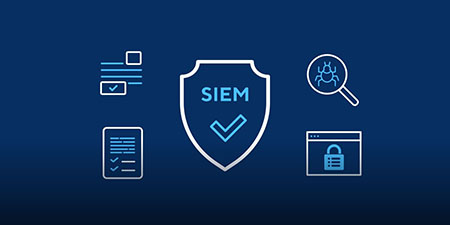The escalating cost of cyberattacks, projected to reach $10.5 trillion annually by 2025, highlights the urgent need for robust threat detection and security monitoring systems. Security Information and Event Management (SIEM) solutions are indispensable, offering centralized log collection, analysis, and correlation to detect and respond to cyber threats. However, maximizing SIEM efficiency depends heavily on effective log management practices.
For Nigerian businesses, adopting advanced log management techniques not only strengthens cybersecurity defenses but also ensures compliance with regulations like the Nigerian Data Protection Regulation (NDPR).
Essential Log Management Techniques for SIEM Optimization
1. Centralized Log Collection
- Technique: Aggregate logs from firewalls, endpoints, servers, and cloud platforms into a single repository.
- Benefits: Enhances visibility and simplifies monitoring across diverse systems.
- Best Practice: Use secure protocols such as Syslog over TLS to prevent interception during log transmission.
2. Log Normalization
- Technique: Standardize logs from different sources into a consistent format.
- Benefits: Streamlines analysis and facilitates accurate correlation.
- Best Practice: Automate normalization processes within the SIEM system for efficiency.
3. Log Enrichment with Contextual Data
- Technique: Augment logs with details like user identity, geolocation, and device information.
- Benefits: Provides actionable insights for incident investigations.
- Best Practice: Integrate threat intelligence feeds to add real-time context to logs.
4. Advanced Log Filtering
- Technique: Eliminate redundant or irrelevant logs to focus on critical data.
- Benefits: Reduces system overhead and accelerates threat detection.
- Best Practice: Implement retention policies tailored to the risk profile of each system.
5. Machine Learning for Anomaly Detection
- Technique: Use machine learning to analyze historical logs and identify unusual patterns.
- Benefits: Detects emerging threats overlooked by traditional methods.
- Best Practice: Continuously train ML models with diverse datasets to enhance detection capabilities.
6. Real-Time Log Correlation and Alerting
- Technique: Correlate logs in real time to uncover complex attack vectors.
- Benefits: Speeds up response to multi-step or distributed attacks.
- Best Practice: Define correlation rules based on both common and organization-specific threats.
7. Log Compression and Archiving
- Technique: Compress and archive historical logs to save storage space while ensuring accessibility.
- Benefits: Supports compliance audits and forensic investigations.
- Best Practice: Employ encrypted cloud storage solutions for secure, scalable archiving.
8. Automation with SOAR Tools
- Technique: Integrate SIEM with Security Orchestration, Automation, and Response (SOAR) platforms.
- Benefits: Streamlines log processing and automates response workflows.
- Best Practice: Automate predefined actions, such as isolating compromised systems when specific threats are detected.
9. Compliance and Audit Readiness
- Technique: Align log management practices with regulatory standards, including NDPR.
- Benefits: Avoid penalties and demonstrate a commitment to data protection.
- Best Practice: Leverage SIEM dashboards to automatically generate compliance reports.
10. Continuous Improvement through Feedback Loops
- Technique: Periodically review log management strategies and update them based on past incidents.
- Benefits: Keeps systems adaptive to new and evolving threats.
- Best Practice: Regularly update correlation rules and threat intelligence integrations.
Why Advanced Log Management Matters
Adopting these advanced techniques offers several advantages:
- Improved Threat Detection: Quickly identifies stealthy and sophisticated cyberattacks.
- Efficient Resource Usage: Reduces storage and processing demands while enhancing performance.
- Regulatory Compliance: Meets legal and industry standards for data security.
For Nigerian businesses, effective log management is critical to realizing the full potential of SIEM solutions. By implementing advanced techniques, organizations can fortify their cybersecurity defenses, streamline operations, and proactively tackle emerging threats.

